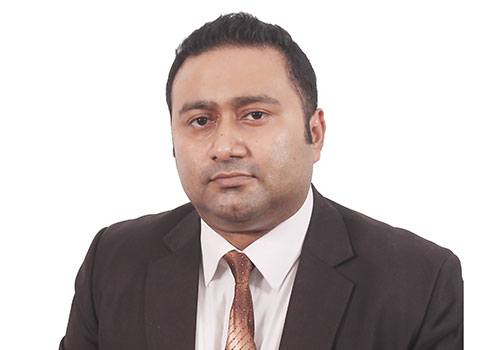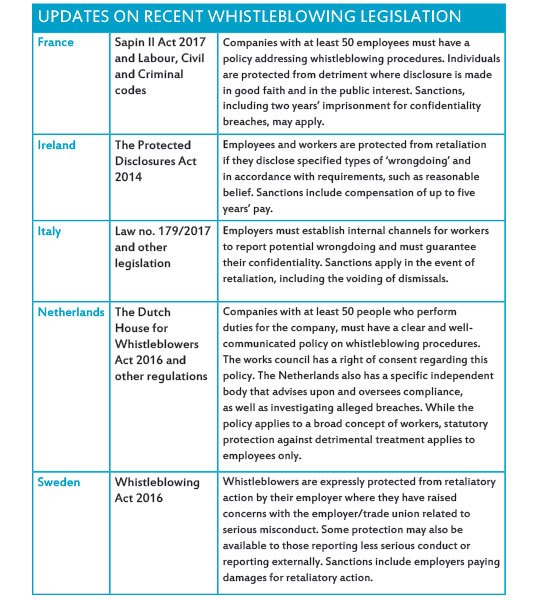Much is spoken in diversity and inclusion circles about the importance of ‘tone at the top’, and several of our participating senior in-house counsel shared their lived experience of the impact CEOs can have when they not only support, but advocate, for change.
‘We have found that when the CEO and the leadership team is consistently visible and vocal on D&I issues – where they’re showing up and speaking up at diversity events, including it in their employee town halls and talking about it whenever they can – it’s one of the engines that propels D&I forward within the company,’ says Wesley Bizzell, senior assistant GC at Altria Client Services Inc.
The in-house legal team may not necessarily be the first port of call for those looking to promote a D&I agenda, but most of the counsel we spoke to felt that inclusion and the general counsel’s office can be natural bedfellows.
In fact, Hugh Welsh, general counsel at DSM North America, believes that in-house departments can turn any cognitive dissonance arising from a lawyer raising issues to their advantage in furthering diversity and inclusion.
‘Typically, law departments are very risk averse. You may have law departments that are very actively involved in sexual harassment training, hostile workplace training and things like that, but from a corporate defensive position – essentially to afford the company an affirmative defense,’ he explains.
‘At a superficial level, there’s an appearance of a conflict but I think that when you have lawyers who are willing to speak emotionally and meaningfully about the importance of these issues, you move beyond compliance. Compliance and new rules and new processes are in many respects the worst way to drive that change. To make meaningful change, you have to change the culture and so to have the lawyers out in front on many of these issues goes a long way to changing the culture, because what they are about to say is so unexpected.’
In his own organisation, Welsh has played a role in bringing certain inclusion issues into the corporate context.
‘What I had experienced was that conversations around those very emotional but very topical issues stopped the moment you crossed the threshold of the corporate door. So we held a meeting at our New Jersey headquarters called an “authentic leadership summit”, specifically focused on creating a safe environment to have conversations in a corporation around #MeToo, Time’s Up and Black Lives Matter, in partnership with the Tri-State Diversity Council, and I can say it was an immensely provocative, deeply emotional and very effective meeting. The panel answered one question and then three hours later we were done – because of the audience participation.’”
The notion of corporate culture in itself can be inherently nebulous, but nearly all of those we spoke to as part of the research for this report felt that in-house legal teams are well positioned to be agents for change inside their respective businesses.
‘Legal teams are in a position of strength to lead by example, because people do listen and I think it can have significant weight – so using that for good, and to express strong corporate values is really worthwhile,’ says Kate Karas, formerly senior associate general counsel at Lending Club.
One example of how legal departments can be well placed to lead on societal diversity can be seen at Hewlett Packard Enterprise’s legal team, which worked with the Girl Scouts of the USA to create a cybersecurity badge, to encourage young girls’ interest in a cybersecurity career.
But the variety of ideas and activities showcased in the pages of this report points to there being no blueprint for a successful initiative – instead, what is key is an intentional and sustained commitment to furthering inclusion and diversity.
‘I have a sign that hangs above my computer that asks, “What good shall I do this day?” That’s really how I look at it: what can I do to advance the issue in both big and small ways on a daily basis,’ says Bizzell.
While a positive – albeit broad – North Star, Bizzell does however highlight some essential elements for inclusion, particularly for LGBTQ individuals: namely inclusive policies that clearly protect all diverse individuals – for example, clear anti-discrimination policies for sexual orientation, gender identity and gender expression – parity in benefits, and an expanded talent pool.
‘[Diversity and inclusion] is a complex issue and we need to address it like a complex issue, in a multi-dimensional way, throughout the career trajectory of an attorney from the law school and recruiting stage to the executive committee decisions,’ he says.
The pipeline
The earlier inclusion starts the better, and school can also be a powerful tool to recruit members of diverse communities into the legal profession. Connie Brenton recalls her ‘life-changing’ visit to Southern University Law Center, where students are recruited for ‘grit and gratitude’:
‘Many of them have had jobs for a long period of time, so they have a sense of what it is to work, alongside a passion for what they are studying and why they are studying. There’s a true desire to make a real difference in their communities. There’s an aspiration to learn and be exposed to a multitude of experiences so that they can bring that back and uplift their communities,’ she says.
The experience sparked the ‘Community of Legal Interns’ – a scheme to provide free online training to interns across the globe, thereby circumventing many issues that diverse students face when accessing high-quality training and opportunities, and investing in the future profession.
‘There’s opportunity in terms of creating the next generation of attorneys who have a fundamental connection with one another and a focus on diversity and inclusion from before they graduate. It becomes part of their DNA prior to even completing their legal training – so who knows what that will look like in another ten years?’ she reflects.
As diverse students and interns complete their education and enter the world of recruitment and employment, opportunities abound for law firms and legal departments to continue leveling the playing field in term of inclusion and diversity.
To combat the universal human temptation to recruit and promote in our own image, Diversity Lab created the Mansfield Rule, inspired by the NFL’s Rooney Rule, which mandates that 30% of internal and external candidates considered by law firms for senior roles must be diverse. The Mansfield Rule for law firms has proved popular and effective, with 100 firms piloting its newest iteration and recently published results showing notable increases in the diversity of candidate populations and the composition of leadership ranks. Diversity Lab recently launched the Mansfield Rule: Legal Department Edition with 20 legal departments that are applying the Rule’s framework to their recruitment, retention and promotion processes, including hiring outside counsel.
‘We are very focused on the Mansfield Rule, which requires organizations to commit to considering diverse candidates in recruiting, developing and promoting people into leadership,’ explains James Chosy, general counsel at U.S. Bank.
‘Our in-house version just rolled out, and we were one of the first companies to agree and sign on – we’re very proud to be on the leading edge of that. We’ve since taken things a step further, and have actually asked about 40 of our leading law firms to formally commit to the Mansfield Rule.’
Conscious of the unconscious
The major thread in D&I approaches is that of unconscious bias training, in recognition of the fact that everyone has biases that affect their decision-making, often to the detriment of a diverse and inclusive working environment. But is it effective?
Not in isolation, says Caren Ulrich Stacy, founder and CEO of Diversity Lab.
‘You don’t walk into a room for an hour-long training and walk out unbiased. If it took 40 years to create the biases that you hold, there’s no chance that in one hour, or two hours or even five hours, you’re going to eliminate or even minimize those biases,’ she says.
‘Research shows that when you go to unconscious bias training, most people see something they could do different or better, they see that there is bias, but they think it’s much worse in everybody else than them. They leave and they say, “Wow, my colleagues are really biased, I have this little thing I have to work on but everybody in this group is really biased!”’
Private Practice Perspective: From Bystanders to Upstanders: Standing Together For Inclusion
What does it really mean to cultivate an inclusive culture? How do we engage more of our employees in our diversity efforts? Like many organizations, these are questions that Weil’s diversity committee grapples with to accelerate change.
In 2015, I embarked on a series of conversations with a cross section of internal constituencies as well as with external experts and diversity professionals at other organizations. What I heard was a desire for a broader range of colleagues to take an active role in diversity efforts and to speak up when issues arise. When I spoke to colleagues about engaging in inclusion, they expressed a desire to get involved but were fearful of saying or doing the wrong thing.
Upstander@Weil is designed to inspire and empower all attorneys and staff globally to stand up for inclusion in the workplace, community and at home. Upstanders are allies, supporters, and advocates for people and communities who share a different background or identity than their own. To prompt bystanders to take action, tools and training are essential.
Weil promotes an Upstander culture with an internally created Upstander action guide detailing over 50 behaviors and an internet page with over 40 resources. The action guide includes behaviors that our affinity group members want from their colleagues. The effort was officially launched during Weil’s Global Diversity Month in November 2015. The kick-off event was video conferenced globally featuring a keynote address by executive partner Barry Wolf, a cross-office panel of internal ‘Upstanders’, and the debut of an internally produced video highlighting attorneys and staff of all levels.
The centerpiece of our rollout was the 2016 annual mandatory diversity training requirement, utilizing interactive diversity theater with professional actors and guided group discussions to bring the Upstander behaviors to life.
Following feedback that being an Upstander for racial diversity is particularly challenging, we devoted the 2017 training to ‘Talking Boldly About Race: Being an Upstander in a Time of Cultural Unrest’, facilitated by Verna Myers.
While the Upstander initiative was developed entirely in-house, it is replicable in all kinds of organizations, large and small, across sectors. During the internal launch, we engaged clients to help motivate the firm to embrace the universal power of allyship, and later we shared our framework with clients to spread the Upstander message and tools.
Weil’s leaders lead by example. Each affinity group has a management committee sponsor who is not a demographic member of that group.
Four years after the launch of Upstanders@Weil, the term is in the Oxford English Dictionary, clients embrace the concept, and nearly 90 Weil attorneys and staff received Upstander@Weil awards. Everyone plays a role in cultivating an inclusive culture and all organizations can benefit from empowering all to be Upstanders.Meredith MooreGlobal Director of DiversityWeil, Gotshal & Manges LLP
Upstander Definitions
Oxford English Dictionary: A person who speaks or acts in support of an individual or cause, particularly someone who intervenes on behalf of a person being attacked or bullied.
Facing History and Ourselves: An Upstander embraces the challenge to speak out, do the right thing, and make decisions that help create positive change in our world. They make a conscious choice to step in instead of stand by.
Upstander Actions
Listen up:
- Learn, read, ask questions and discuss to step into the shoes of someone of a different demographic group.
- Inclusion examples: request dietary preferences/restrictions; use gender neutral language when inviting guests; ask about holidays for scheduling; ask for preferred pronouns.
Show up:
- Attend, actively participate, and contribute to diversity programs.
- Inclusion examples: attend events where you’ll be in the demographic minority; join a board for a cause unrelated to your background; bring your colleagues who might not feel comfortable to diversity programs.
Talk up:
- Lift up careers by sponsoring, opening doors, making connections and finding opportunities for colleagues of different backgrounds.
- Inclusion examples: ensure diversity in panels and guest lists; equitably distribute office housework; mentor and sponsor across difference.
l
Speak up:
- Identify and interrupt bias and stereotyping, even if unconscious or subtle, whether in the moment or shortly after the fact.
- Inclusion examples: highlight when a woman or person of color’s idea is overlooked and someone else gets credit; say something when you suspect that unconscious bias may impact how a person is evaluated.
When undertaking any form of diversity training, in particular with unconscious bias, a key consideration is to ensure that individuals aren’t made to feel isolated or blamed.
‘Sometimes bias training portrays that, which is problematic, because it makes them feel alienated as opposed to making them feel like allies,’ says Ulrich Stacy.
‘If you reinforce training with rewards and some of those things we know change behaviors, then it can have an effect, but not many law firms and legal departments tend to take that next step.’
The leading GCs we spoke to were aware that unconscious bias comes into play not just in the recruitment process, but in the day-to-day decisions taken by leaders that impact on the career progression of diverse individuals. To combat this, for example, Verona Dorch, chief legal officer at Peabody Energy, is intentional about nurturing the career progression of her team-members, even if they have not yet considered it themselves.
‘There are unconscious biases that can come into play, like the halo effect – someone looks like you, so you may be more willing to sponsor them or almost overlook deficiencies. It’s important to me that everybody is given that level of sponsorship and that I’m there advocating for people who others may not be advocating for,’ she says.
‘I want to make sure people are giving folks that may not fit their definition of someone that should be developed that opportunity too. It really is, I think, taking that broader chance on people, including those who may look and think different from you, but do deserve a seat at the table.’
The supply chain
As well as forming key partners, law firms are frequently a training ground for future in-house attorneys. In-house teams have for some time now been leading the charge in driving inclusion and diversity across the profession, enriching the profession with some creditable results. Law firms are often subject to much finger wagging by in-house teams, but the best supplier diversity schemes attempt to get under the skin when understanding a law firm’s culture, rather than simply relying on a set of numbers.
‘I want to talk to some of the female or minority associates and partners. I’m very keenly interested in what happens when fifth- or sixth-year female associates decide to have children. What does the firm do to bridge that time so that talented associate is not set back on the partnership track? I find that, more often than not, they do nothing, which to me is an indication of what the culture in the organization might be,’ says Welsh.
‘I would love to see them have a senior partner at the firm assigned to them as a sponsor so that they have the sense of security that there is a senior partner at the firm who’s looking out for them, and they’re not going to get sidetracked or derailed, or put in a position where they feel like they have to opt out because they don’t have the protection that maybe a male lawyer in the law department would feel they have. Somebody to share with them what’s going on day to day, even if they can’t be there every day, so they continue to feel connected both emotionally as well as factually as to what’s going on at the firm, and that they continue to get choice assignments and choice client contact.’
Chris Young, general counsel at Ironclad, Inc, takes a similarly thoughtful and long-term approach when considering the external counsel he uses for staffing matters.
‘Externally, there are times when I make an express request to outside counsel for a diverse attorney not only to be assigned to the matter, but also to take on substantive work and to be afforded the opportunity to assume significant responsibility, if not a leadership role,’ he says.
‘I also make sure that we maintain a roster of diverse outside counsel. I participate in minority bar associations and, having been part of a community of diverse lawyers for quite some time, I have been fortunate enough to build long-term relationships with tremendous lawyers who also happen to be lawyers of color. When there’s an opportunity to hire those lawyers, that’s who I go to first, not only because they’re diverse, but because I can trust them, and I know the work they do is of the highest quality.’
At CBS Corporation, data tracking is taken to a particularly granular level, providing nuanced detail which can then be used to understand and drive impact. Naomi Waltman, associate GC for litigation, explains the team’s system of tracking the diversity of law firms through billing software, ensuring a detailed understanding of who is working on CBS matters and, by extension, tracking the team’s own contribution to the diversity space.
‘I do my best to ensure that all our matters for which we retain outside counsel are staffed with diverse teams, and that our outside counsel guidelines reflect our commitment to diversity and our expectations that law firms assign diverse teams to our matters,’ she explains.
‘We’ve instituted a system where we can track the diversity of law firm timekeepers working on each of our matters through our billing software. That allows us to hold firms accountable and also to measure how we are doing as a department on diversity. In addition, our outside counsel guidelines state that we expect firms to staff our matters with diverse teams. When law firms come in for a pitch, we reiterate that expectation.’
Measuring progress
Many of the in-house counsel we spoke to for this report underlined the importance of data in tracking diversity performance – particularly with regard to the selection of outside counsel – but some were keen to point out that metrics can say little about inclusion and the career progress of individuals, and must be carefully interpreted to take account of the incremental nature of change.
‘One of the things I always fear is if you get too strict on measures, it takes such a long time to make change that I’m afraid to throw out the baby with the bath water, as they say. We’re so worried about showing improvement that if we don’t, we’re going to fear that it’s not working and stop tracking the diversity data and focusing on the metrics,’ says Carrie Hightman, chief legal officer, NiSource Inc.
‘But, in fact, it takes time to make change and so a lot of the work that we focus on at the company is how do you know that you’re making progress and making sure that measures are not just backwards-looking but forwards-looking. The last thing you want to do is presume you’ve failed and then stop the program when, in fact, change is very gradual.’
Many agreed on the importance of some measure of qualitative assessment to complement the quantitative, especially when investigating the complexities of building an inclusive environment among both external and internal colleagues.
‘I think most law firms have the best intentions when it comes to diversity and they generally do a good job attracting diverse classes of summer associates and new lawyers. That is not translating to more diversity at senior ranks and in partnerships, however. I think the problem is a lack of mindfulness and realizing that extra effort and attention is needed to make sure that diverse talent is getting the opportunities that will lead to promotion,’ explains Kimberley Harris, general counsel of NBCUniversal.
‘Law firms need to identify their talented mid-tier diverse associates and put thoughtful effort behind their development. It’s not enough simply to bring them into the building – you have to focus on making sure that they continue to develop and advance.’













